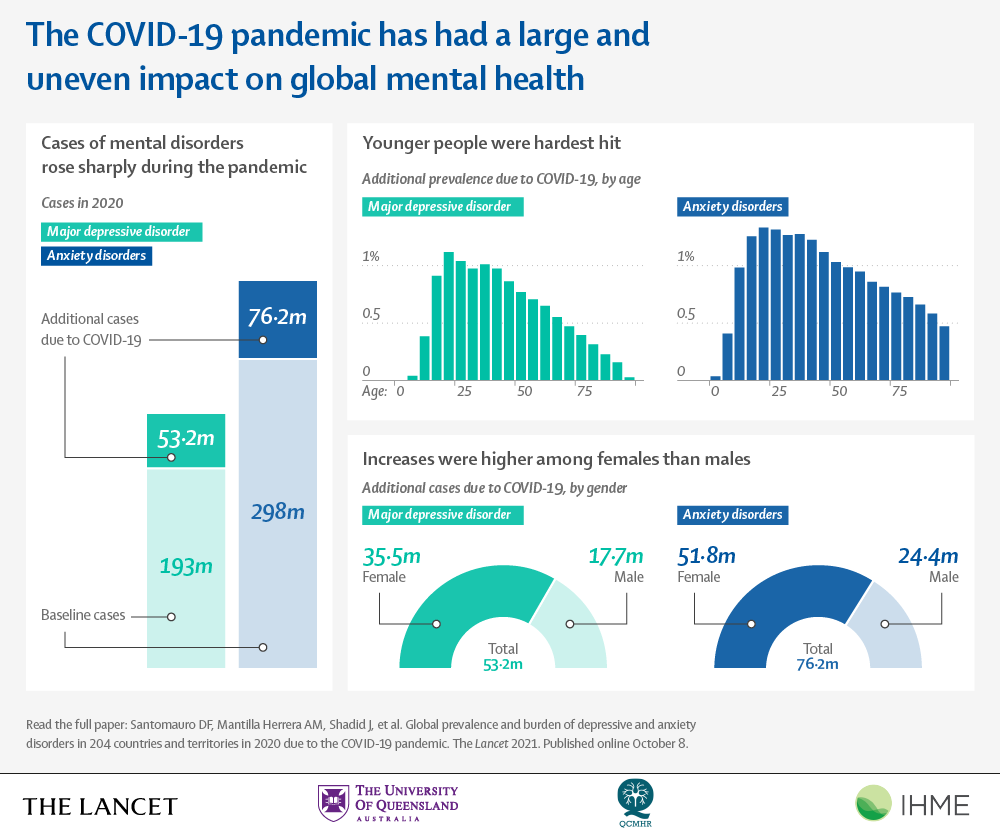Another consequence of COVID-19 comes as an alarming jump in suicidal and self- harm attempts among those aged 14-35, as mentioned in data presented under the RTI Act from health and police records.
Pandemic in itself and a string of lockdowns can be very overwhelming, a sudden halt in way of living, and people juggling to adapt the new normal. It was expected to lead to a substantial amount of psychological crisis and it turned out to be huge. The mounting concern among citizens of the spread of infection led to psychological panic in society.
As per the data presented by World Health Organization WHO, more than 7,00,000 people die due to suicides every year. It further claims that 77% of suicide occur in low and middle- income countries.
WHO IS AT RISK?
For people aged 14-25, academic stressors, like exam stress, difficulties attending online classes due to resources limitations, etc., are the primary risk factors.
Second being the family issues, tends to go unnoticed and generally normalized. Issues in the family are perceived as private matter; this in turn prevents the patient from seeking help. Having said that, it’s the prominent cause of depression and anxiety among young people.
There is a well-established link between suicide and mental disorders like depression; therefore, many suicides happen impulsively at the moment of breakdown. Moreover, there are evidences which claims, a simple self- harm technique can possibly escalate to death of the individual.
Experiencing violence, disaster, and a sense of isolation are connected with suicidal behavior. Apart from this, people who were or are subjected to any sort of discrimination are certainly more vulnerable to suicidal attempts.
Pandemic, probably has exposed everyone to all kinds of vulnerabilities which led to this worrying trend. Data from JIPMER highlights two distinctive trends of pandemic -the demographic shift in suicide (attempted or completed) and mode of taking such steps.
COMMONLY USED METHODS
According to WHO, 20% of global suicides happen due to self-poisoning, which occurs mostly in the rural areas of developing countries. Data collected through reporting such incidents in India and Bangladesh during the pandemic, suggests two most common ways – hanging and jumping from height.
Knowledge on most common methods can be beneficial while strategizing the prevention, such as restrictions on pesticides.
Furthermore, social stereotypes often act as an obstacle in path of recovery. Stigma associated with mental disorders and suicide is the reason why a patient refrains himself/herself/ themselves from seeking professional help. Specially, when in Indian sub-continent, anybody who seeks psychiatric help is subjected to name- calling. One of the key ways to prevent suicide is to spread awareness in the society and break taboo.
SUICIDES ARE PREVENTABLE
Limiting the resources for such acts, raising awareness campaigns, providing applications which can provide psychological first aid specially during the time of pandemic, these could a few pointers for policy makers.
Fostering socio- emotional life skills in adolescents and early identification of warning signs like frequently talking about hopelessness and feeling trapped, could be a possible measure.
Most importantly, spreading awareness, and normalize seeking help. Do not avoid your mental health by referring to it as a “bad day” or “mood swings “. There is no harm in extended emotional support.
If someone is in crisis, call on helpline 9152987821.

